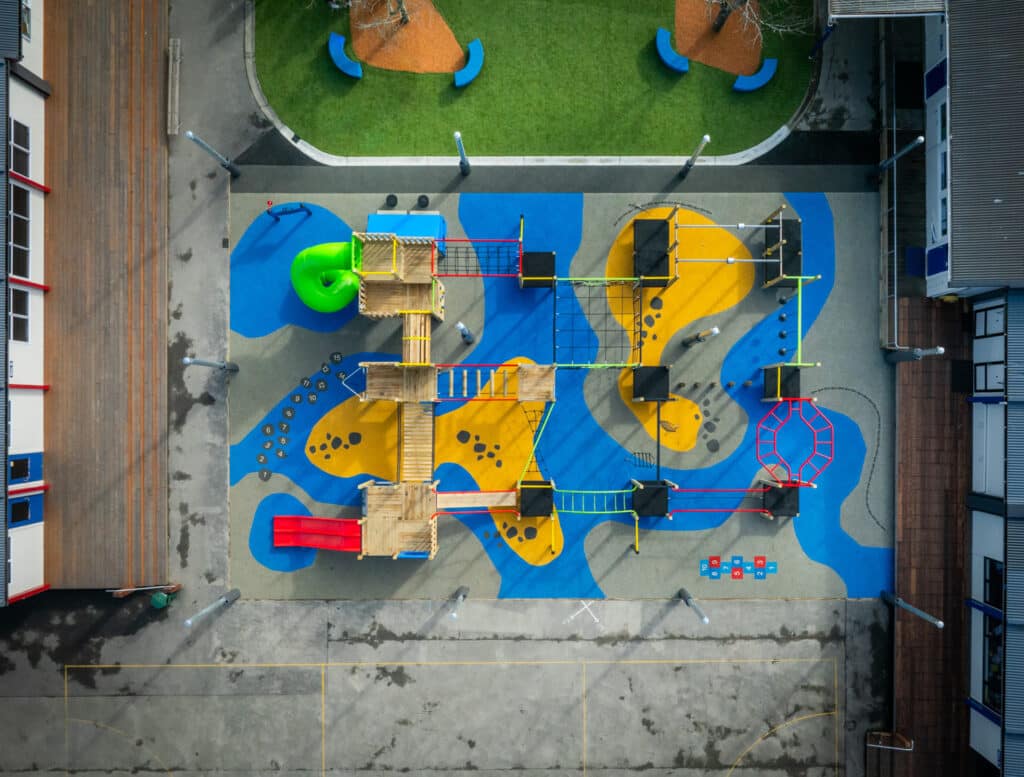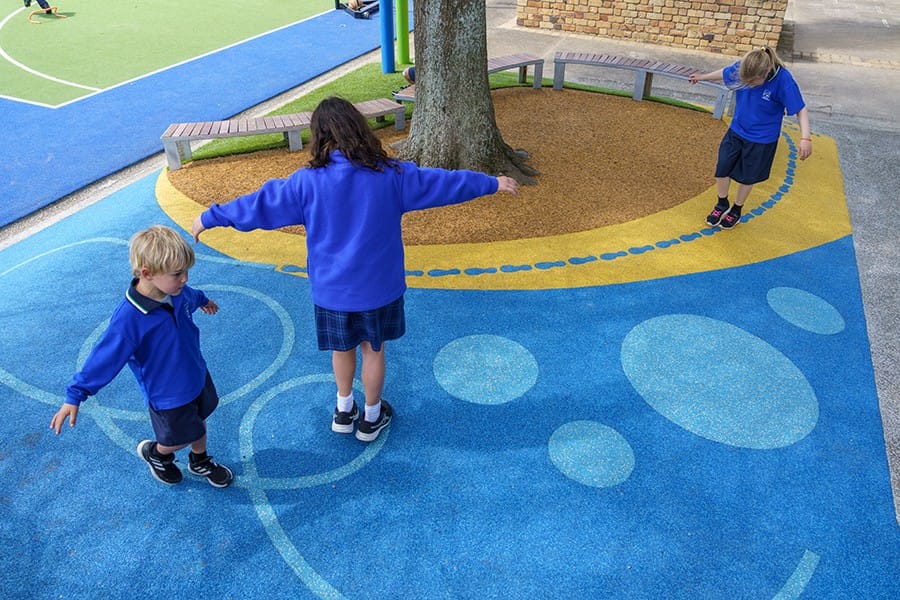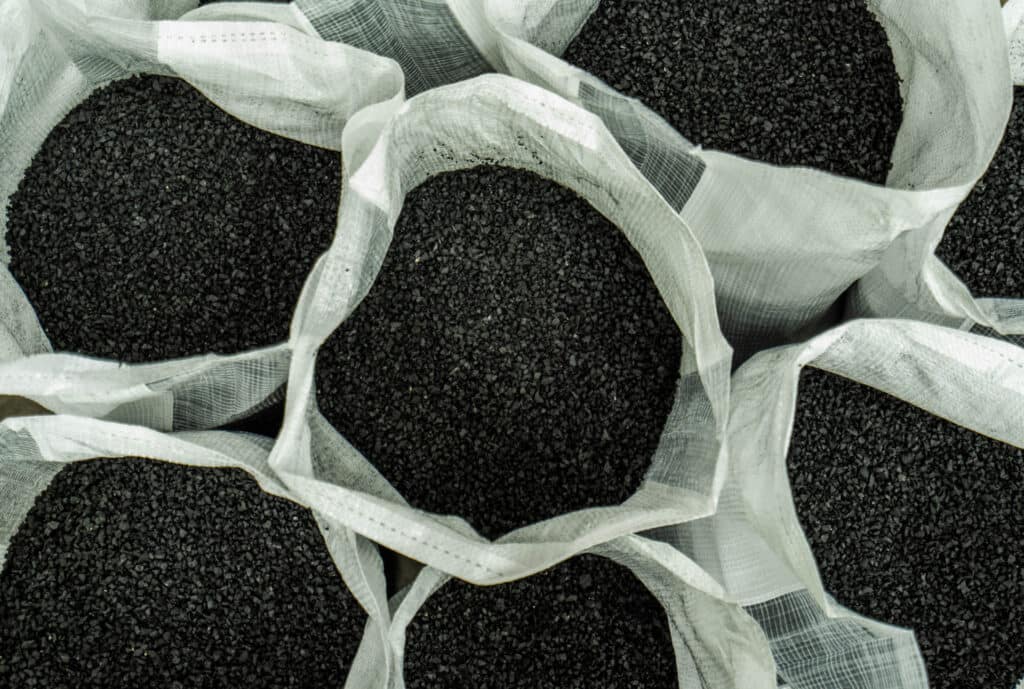Surfacing is a key part of creating the atmosphere of a playground but can often be overlooked.
In this article, we take a look at the eight main types of playground surfaces most commonly used in New Zealand. We look at the pros and cons of each surface and make suggestions for where and when you might use them.
Click Here to Compare Other Playground Surface Options in our Product Catalogue
Natural

Natural Lawn

Natural, low cost, but struggles in high traffic or wet or shady areas. Natural lawns need to be specifically located to reduce traffic and located in optimal growth areas. It’s important to remember that your natural lawn might not be usable for parts of the year and will need aerating and re-sowing over time.
Mulch

A shredded organic material usually used around plants but can also be used as a surface on other areas. Mulch requires weeding and topping up from time to time. It needs to be laid relatively flat and will wash downhill when installed on a slope.
Sand

Sand is a natural choice that is most often used for its play value in sandpits. Sand can also be used as an effective safety surface in general play areas and under play equipment. If well contained, sand provides high value, low maintenance surfacing.
Pebbles, Chips, or Shells

Natural materials, ranging from dust size to pebbles or shells. The material in these surfaces is loose, so it travels around the site and is easily contaminated with other loose materials.
It requires maintenance and topping up and needs to be laid relatively flat to avoid washing downhill.

Concrete

Hard, permanent and easy to maintain. Concrete allows for outdoor furniture and equipment to be set up flat. Ideal for main pathways, however, it’s hard to fall on and rough to crawl on. It can be painted with a surface coating for added play value and can accommodate sloping terrain.
Decking

Softer than concrete with a more natural look. Decking is costlier and requires more maintenance than concrete. It has a shorter lifespan too, but it looks so good that it’s worth it. Can be installed on the flat or on a slope in steps.
Wet Pour Rubber

Continuously poured rubber surface with impact attenuation. Huh? Basically, that means it’s one piece and has a cushioning effect that makes it a safe fall surface. Permeable to water and low maintenance. It ranges in colours and can provide ground patterning for added play value. Easily accommodates sloping terrain. Pour’n’Play is New Zealand’s leading wet pour rubber surface.
Artificial

Artificial Turf has a more natural look than other artificial surfaces like Wet Pour Rubber. It needs to be laid relatively flat to avoid seem splitting. It is hotter than natural surfaces and shade should be considered in exposed areas. It’s low maintenance and usable all year round. PermaPlay artificial turf comes with a cushioned base making it an excellent choice for playgrounds.
When you consider the range of different surface types and what they offer, you realise how many different experiences you can create through your choice of surfacing.
Generally, we recommend for playspaces to include both artificial and natural type surfaces to gain the maximum benefit from each. The surfaces should encourage flow and should allow access for as much of the year as possible.
By combining natural and artificial materials into your playspace, children will gain the benefit of being able to play with both. That means they’ll experience more textures, colours and temperatures.




